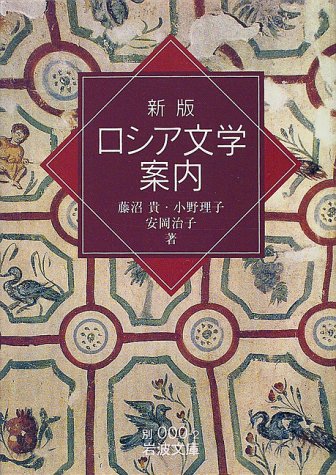10 0 0 0 ロシア文学案内
- 著者
- 藤沼貴 小野理子 安岡治子著
- 出版者
- 岩波書店
- 巻号頁・発行日
- 2000
1 0 0 0 OA シンフォニック・リーチノスチ ―ユーラシア主義に見られる全一的理想社会の探求―
- 著者
- 安岡 治子
- 出版者
- ロシア・東欧学会
- 雑誌
- ロシア・東欧研究 (ISSN:13486497)
- 巻号頁・発行日
- vol.2005, no.34, pp.26-36, 2005 (Released:2010-05-31)
After the breakup of the Soviet Union, Russians, in search of an identity to unify their still vast country, are reevaluating a movement of the 1920s, Eurasianism. Why is Eurasianism attracting Russian attention again today? The main reason may be that Eurasianism, in designing an idealistic State system, took into account the unique spiritual, cultural and psychological factors of Russian history. This paper aims to make clear the spiritual foundations of Eurasianist thought.Eurasianism views the Orthodox Church as a spiritual foundation able to unite the whole Eurasian world. However, could the Orthodox Church really provide a common spiritual foundation for the vast cultural range of the various Ural-Altaic ethnics? To this question Eurasianists answer: “The ideal of Orthodoxy is a symphonic, organic and sobor-like unity of various religions.” The expression sobor-like unity derives from the Russian theological term sobornost, which signifies the central concept of the Orthodox Church, whereby the individual shares corporate life and unity, while retaining personal freedom.With this concept of sobornost they insist that the aim of Orthodoxy is not to erase the individuality of each pagan religion and Russianize it, but to create a symphonic world made up of various sounds. In support for this position, they say that there exists some similarity between the spirituality of Orthodoxy and some Eurasian pagan religions, including Buddhism.This similarity could be summed up in terms of the contiguity of the pantheism of religions such as Buddhism and the panentheistic tendency of Orthodoxy. Panentheism is the belief that the Being of God includes and penetrates the entire universe. The Orthodox Church, which does not draw a sharp boundary between Nature and Grace, (a characteristic marvelously described in the words of Elder Zosima in the The Brothers Karamazov, ) is indeed panentheistic.When Eurasianists explain the peculiarity of their own culture and of the State system plan based on it, they use the key-concept symphonic personality (lichnost) . Lichnost is often translated as personality or individual, but this notion, which is obviously influenced by Orthodox ideas, is quite different from the usual Western meaning of individual. In Orthodoxy lichnost (the real personal Self) can be achieved only when it is opened to the whole, so it does not oppose the whole, rather it is enriched by it.The society of symphonic personalities is an idealistic organic united whole of plurality. However, Eurasianists also insist that it is a society where various levels of symphonic personalities are hierarchically united. This suggests that the smallest unit of lichnost, which is individual, might have the least autonomic value of itself. Berdyaev severely criticized the idea of symphonic personality, considering it a metaphysical foundation for human slavery.When we read the Eurasian project of a new State governing system named“iheocracy, ”we have to agree with Berdyaev's criticism of the“utopian etatism.”This is because“iheocracy”reminds us of theocracy on the one hand, and of the Soviet totalitarian system on the other.The idea of the symphonic personality comes from the idealism of sobornost and the tradition of philosophy of Unitotality. Eurasianists, in order to overcome the defects of both individualism and totalitarianism, eagerly searched for the symphonic unitotal community, but we have to say that the too hasty attempt to realize it“here and now”on earth, without due consideration of the moral cultivation of each individual, generates a serious danger of Utopianism.
1 0 0 0 OA 『生きよそして記憶せよ』のフォークロア的 宗教的ポドテキスト
- 著者
- 安岡 治子
- 出版者
- 東京大学文学部ロシア文学研究室
- 雑誌
- Rusistika : 東京大学文学部露文研究室年報 (ISSN:09107312)
- 巻号頁・発行日
- vol.4, pp.108-114, 1987-10-30
1 0 0 0 OA 共生の宗教へむけて――政教分離の諸相とイスラーム的視点をめぐる地域文化研究
「宗教的近代」を疑問に付す諸現象(宗教の再活性化、保守革命、イスラーム民衆運動)に対して西洋諸社会が警戒を示すなかで、寛容を創出すべき政教分離の制度が、かえってマイノリティ抑圧へと転化する状況が見られる。本研究では、民主主義的諸価値が特定の宗教に対して動員され、グローバル化に伴う社会問題を相対化、隠蔽する様子を分析した。フランスでは、国家が対話しやすいイスラーム教を制度化するという、政教分離に矛盾する動きも見られた。他方で、ナショナル・アイデンティティとしてのライシテ(脱宗教)が、イスラーム系市民を周縁化しつつ、差別、経済格差、植民地主義的な人種主義をめぐる問題提起をむずかしくしている。
- 著者
- 安岡 治子
- 出版者
- 都市出版
- 雑誌
- 外交フォーラム (ISSN:09151281)
- 巻号頁・発行日
- vol.14, no.7, pp.96-97, 2001-07
1 0 0 0 OA アブラハム的伝統の臨界:三大一神教の哲学、神学・政治論とその外部の地域文化研究
20世紀末に近代の産物である「国民国家」を否定する方向でヨーロッパ統合という試みがなされる一方、旧ソ連・東欧諸国においては、ソ連の解体し、「東欧革命」のあと、逆に「国民国家」として新たな国家統合を試みる動きがはじまり、各地で紛争が生じている。本研究はこうした状況を踏まえ、それ自体多様な歴史的内実を有するドイツ理念とヨーロッパ理念の相関関係という問題を、特に20世紀における展開を中心に、今日的視点で整理することを目的とした。そして、ドイツを中心としつつも、歴史的にはギリシア、ラテン文化・思想の伝統を踏まえ、地域的には周辺諸地域、とりわけ旧東欧、ソ連諸国との関わりのなかで、ヨーロッパ統合の時代における新たなドイツ理念の展開を研究していった。その結果、19世紀のドイツ・ロマン主義や20世紀初頭のドイツにおける民族主義がその周辺諸地域に大きな影響を与えたこと、こうした地域、とりわけバルカン諸国においては、この影響下で作り上げられた民族的な神話と、それに基づく人々の集団的な記憶と強力なナショナリズムが今日に至るまでなお力を持ち続けていることが確認できた。さらに、国法学者カール・シュミットに中心を当てた共同研究も行ない、この思想家が汎カトリックの思想基盤に立つヨーロッパ有数の思想家であると同時に、その活躍した時代がナチズムの時代に当たり、ヒトラーの桂冠法学者としての20世紀におけるドイツとヨーロッパの理念の相関関係を体現する思想家であることが浮かび上がってきた。また、ミュンヒェン・シュヴァービングを震源地とする母権思想はシュミット自信も自覚していたように、彼の男性的父権的政治思想の対極をなしていること、ベルリンを本拠とする男性同盟的ドイツという思想とミュンヒェンの母権思想の対比が20世紀初頭のドイツにおけるヨーロッパ理念の対極であることなども明確になった。
